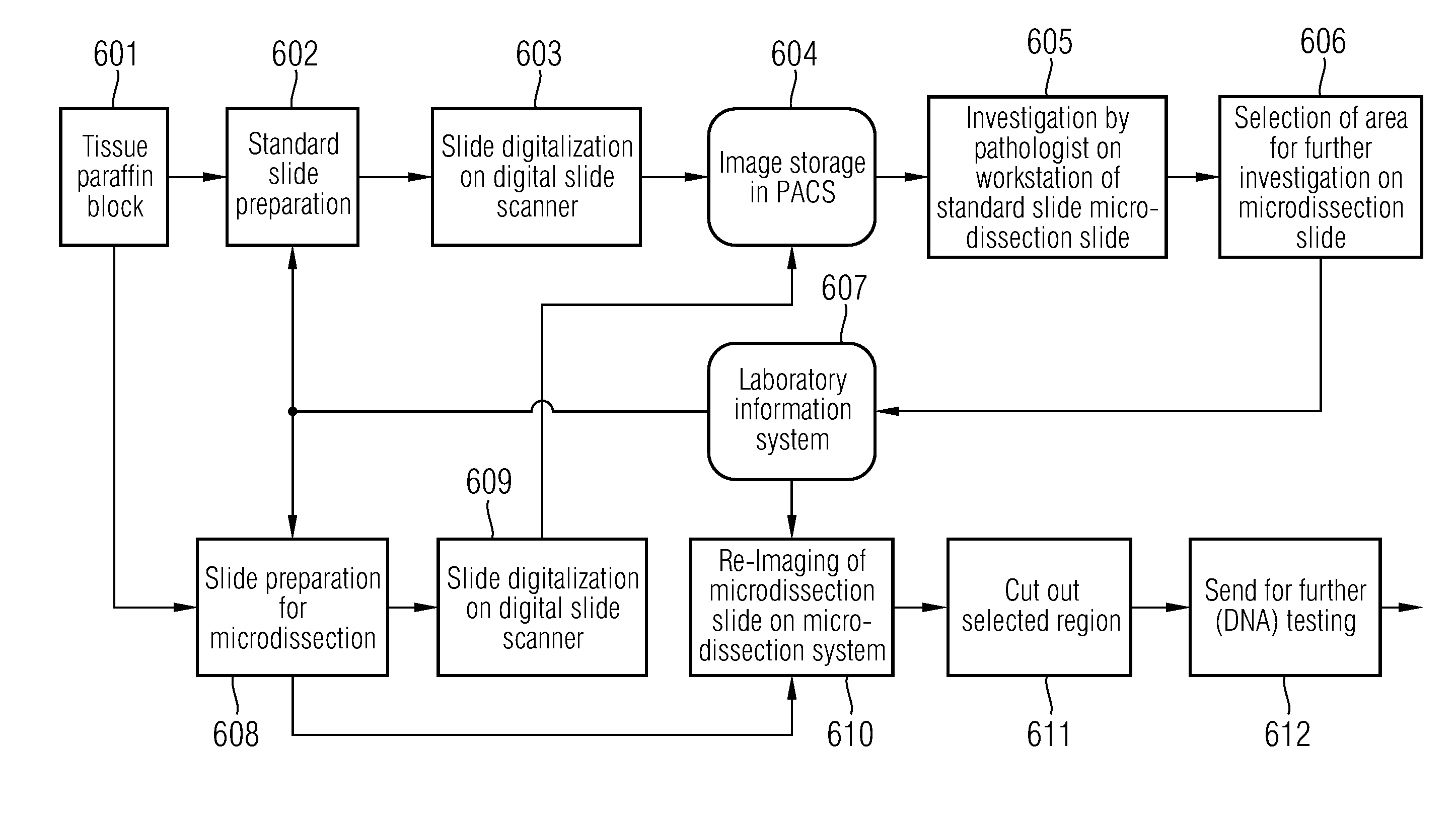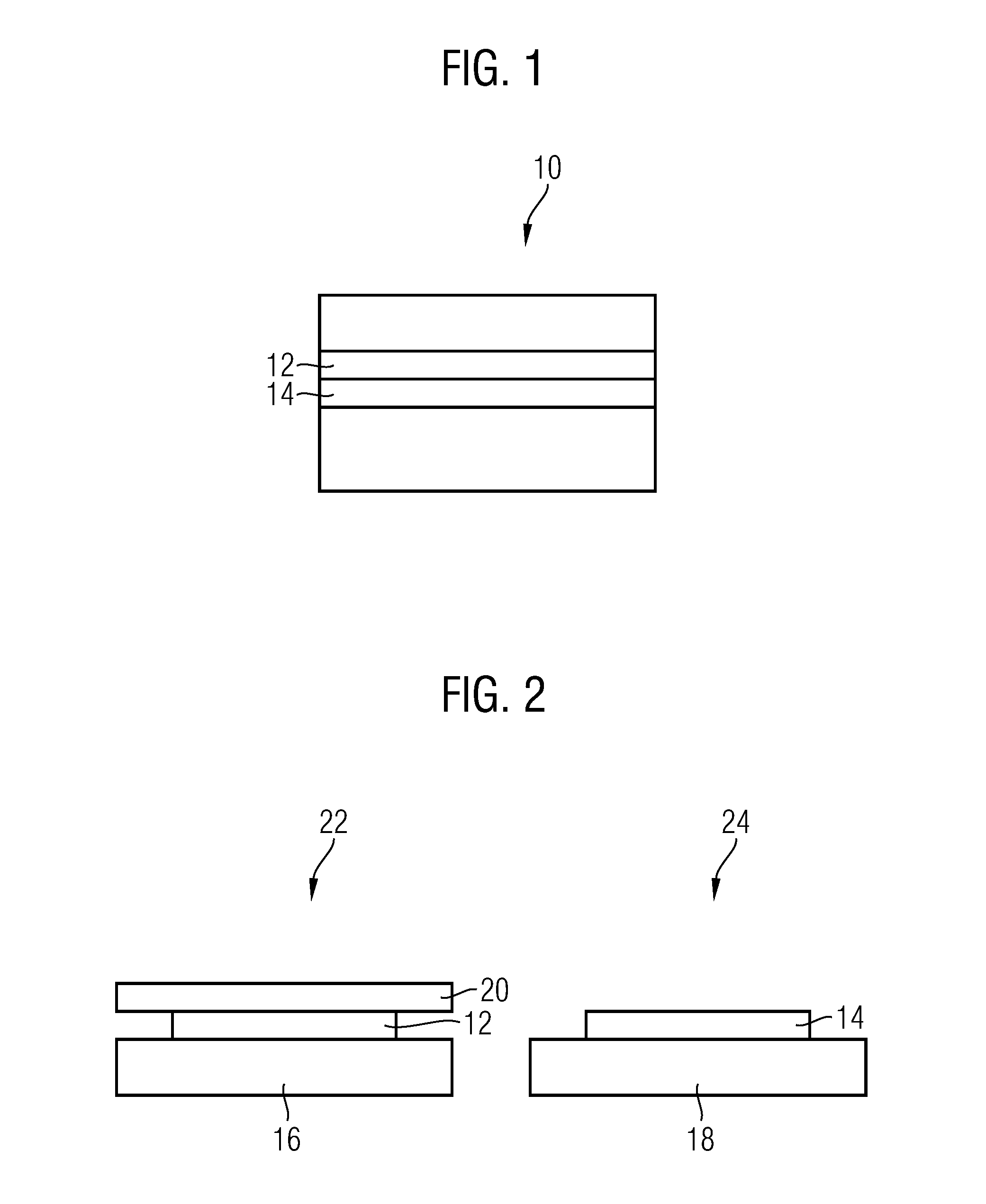[0041]providing a
user interface for enabling a user to select a data
record from the set of data records.The
information processing system thus facilitates controlling a
workflow involving at least two slices
cut from, e.g., the same
paraffin block. The information
processing device may be configured in the described manner by means of both hardware and
software, the hardware comprising a memory in which the
software has been stored, the
software comprising
executable instructions for controlling the hardware. The data records may be represented in digital (e.g. binary) form in the memory. More particularly, the slice identifiers and / or the process identifiers may be digital representations of alphanumerical constants. The set of data records may comprise a first data
record and a second data record, wherein the
process identifier in the first data record and the process identifier in the second data record differ. The
user interface may be configured for displaying contents of the selected data record. The user interface may further enable the user to modify the data records in the set of data records and / or to add new data records to the set of data records, and / or to remove data records from the set of data records. The information
processing system may comprise a computer, e.g. a
personal computer, or a
computer network. The information
processing system may comprise input means and output means. The input and output means may comprise, for example, at least one of the following: a keyboard, a mouse, a trackball, voice recognition means, a monitor such as a
liquid crystal display, and sound output means. The input means and the output means may be integrated in the processing system or form distinct units operatively coupled to the information processing system. The user interface may be implemented by software for controlling the input means and the output means such that the user may exchange information with the information processing system. The information processing system may comprise a memory carrying the set of process identifiers, the set of data records, and the software for controlling the user interface. The memory is not necessarily provided by a single
physical unit, but may comprise several distinct memories. A distinct memory may be provided by, for example, a magnetic data carrier, such as a hard disk, or an optical data carrier such as a Compact Disk (CD), Digital Versatile Disk (DVD), or a
flash memory.
[0058]The set of data records may indicate, for at least some of the slices indicated by the slice identifiers, an order corresponding to the order in which the at least some slices were arranged before being
cut from the object. For example, a number could be included in each or at least some of the data records such that the first slice that was
cut from the object is numbered 1, the next slice that was cut is numbered 2, and so on. This may help finding data records relating to adjacent slices. These numbers, together with information about a thickness of each of the adjacent slices, could also be used for generating a three-dimensional image of the object. The number relating to a particular slice and indicating the place previously occupied by the slice in the object may be integrated in the slice identifier or form another entry of the data record. Additionally or alternatively, a data record may contain an entry pointing to another data record, e.g. to the data record of an adjacent slice. Also, information indicating a pair of slices could be added to the data records. This may be useful in order to specify a pair of slices that is intended to be used for defining a colour transformation between colours associated with a first
staining method and with a second
staining method, respectively. An example of a colour transformation method has been presented by the applicant in a previous application. A pair of slices may, for example, be indicated by a first pointer in a first data record, the first pointer pointing to a second data record, and / or by a second pointer in the second data record, the second pointer pointing to the first data record.
[0081]determining from the region of interest in the second image a region of interest in the second slice.The region of interest in the second slice may thus be derived from the region of interest in the first image. Alternatively a region of interest could be defined directly in the second image and from it the corresponding region of interest in the second slice can be determined. However, the first slice being covered by a
cover slip, it may be expected that, depending on the equipment used, the first slice can be imaged more conveniently and possibly more accurately. There may also be situations in which the second slice is produced only after the first slice has been examined and the region of interest has been defined.
 Login to View More
Login to View More  Login to View More
Login to View More 


